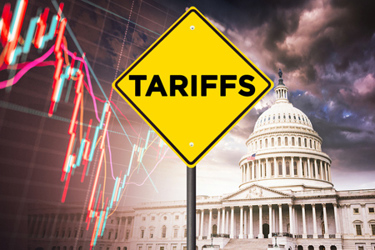Navigating Tariffs: Implications And Strategies For Pharmaceuticals Manufacturers
By Nero Haralalka, TBM Consulting Group

While uncertainties remain, we finally have more clarity on tariffs. On the day after April Fool’s Day, the U.S. showed it was not fooling around by placing 10% tariffs on most of its trading partners. For the pharmaceutical industry, the implications are broad and deep. Companies are being asked to pivot on a dime and adjust to a dramatically new world trade order that will drive the cost of APIs up significantly.
As for how these additional costs will be absorbed, drug companies find themselves in somewhat of a no-win situation. If they absorb the extra costs, profit margins will go down. If they pass them on to consumers, satisfaction will go down. We are also likely to see supply chain disruptions as a delayed reaction to companies stockpiling inventory ahead of the tariffs, so firms need to be prepared.
The tariffs bring a whole new set of challenges but there are tactics and strategies companies can deploy to help offset the cost and operational impacts. While the options and solutions will be different for larger industry players versus smaller companies, both have tools at their disposal that can help them mitigate the increasing prices while they seek their best options for managing and procuring APIs going forward.
Reassessing The Other Contributing Factors That Determine Production Costs
When business dynamics shift this significantly, companies often revisit the three primary drivers of production cost — materials, overhead, and labor — to identify areas for improvement. With material prices continuing to rise, many are now focused on optimizing overhead and labor. For example, we recently helped a Florida-based pharmaceutical company reduce labor costs by identifying and eliminating operator idle time—allowing the same work to be done with fewer operators. We also launched an initiative to improve overall equipment effectiveness (OEE) by targeting unplanned downtime, accelerating changeovers, increasing equipment speeds, and reducing scrap. These OEE improvements not only enhanced production efficiency but also delivered additional cost savings through better labor utilization and lower material usage.
Allocating overhead more efficiently is another lever companies can pull to try to soften the tariff blow. Support teams such as quality control and engineering have typically allocated overhead by profitable business lines relative to less profitable. However, companies in this environment should also assess how they allocate indirect labor and the additional costs that may be trimmed by removing organizational or management overlaps, decreasing the number of reporting layers, and adjusting spans of control. Streamlining in this manner — and integrating a strong management system and leader standard work — can build a new level of resilience and drive efficiency improvements of at least 5 to 15%.1
We are also seeing more active management of supply chains, with companies focusing on maintaining balanced inventories, including warehouses, to stay as lean and nimble as possible. Staying on your front foot could also help cushion the supply chain flow challenges that will inevitably come due to the stockpiling we have seen. Another avenue is to pursue alternate locally sourced ingredients, but due to the regulatory approval gauntlet alone, this is not a simple process and takes time to progress.
Breaking Up With Foreign API Suppliers
The tariffs aim to decrease U.S. drugmakers’ long-standing reliance on foreign suppliers, most notably China, which has become a major API supplier to the U.S. in a relatively short period of time. Since 2020, U.S. imports of Chinese pharmaceuticals have grown nearly five-fold, rising from $2.1 billion in value to $10.3 billion. China is the fourth-largest pharma supplier to the U.S., after Ireland, Germany, and Switzerland.2
As they work to become less reliant on foreign sources, pharma companies have limited options. Searching for alternate API materials that may be readily available in the U.S. could be feasible for some, but the complex approval and regulatory process can be prohibitive. If the company is a contract manufacturer (CDMO), it will need to get the company that owns the marketable product involved to ensure that it is an apples-to-apples conversion.
In a similar vein, companies that opt to increase capacity by expanding organically and bringing production closer to home must ensure that they execute tech transfers seamlessly and successfully. Companies’ track records on tech transfers are not very good, as evidenced by production launch delays, cost overruns, and poor quality, and now they are in a situation where they need to do more of them and must find a way to improve quickly. Some studies show that 40% of tech transfers experience delays or failures due to poor planning or execution.3 To be sure, there is a lot to think about if you decide to transfer a production line from China to the U.S. Critical aspects such as formulation details, process parameters, analytical methods, validation protocols, and equipment requirements must be replicated, requiring a high degree of collaboration along supply chains. For these and other reasons, after the tariff announcement, several larger firms were working right up until the implementation deadline to request more time given the short notice provided.
The Impacts To The Pharma Ecosystem
The tariffs, of course, will affect large and small businesses differently, and the mitigation options will vary depending on resources. Bigger multinationals can in-source by bringing resources and expertise in-house and, in fact, we have seen J&J and Pfizer get ahead of the game in terms of building up more in-house production capacity so they can avoid these extra costs.
Meanwhile, smaller firms (those with market capitalizations up to $1 billion) will have an uphill struggle to keep pace. The vast majority of these companies are focused on generics, which play a key supplementary role for the larger firms across the industry, which prefer to outsource generics production. The shifting tides will require CDMOs, which account for nearly a third of global pharmaceuticals production, to be more creative.4 Some of the companies we have been working with, for example, have excess capacity and are focusing on freeing up even more capacity through operational efficiencies, so they are ready to work with other firms to in-source and complete tech transfers rather than resorting to building brand-new facilities. The tariffs could also have the effect of driving more consolidation activity through M&A, as smaller companies potentially link up with larger firms. We have seen drips of this but could see more going forward as companies make strategic adjustments.
In the near term, the tariffs will disrupt and prompt strategy shifts — but over the long run, they could help accelerate innovation, domestic production, and potentially drive more M&A activity as the industry adapts to the changed trade landscape.
About The Author:
 Nero Haralalka is director, US Consulting, at TBM Consulting Group. He is a Lean Sigma Master Black Belt with 35 years of experience in the areas of operational excellence, product development, statistical modeling (including the use of AI), and root cause problem solving. Haralalka has a master’s degree in mechanical engineering from the Illinois Institute of Technology in Chicago and a B.S. in mechanical engineering from the Birla Institute of Technology in Ranchi, India. He also has AAMI QSR Certification.
Nero Haralalka is director, US Consulting, at TBM Consulting Group. He is a Lean Sigma Master Black Belt with 35 years of experience in the areas of operational excellence, product development, statistical modeling (including the use of AI), and root cause problem solving. Haralalka has a master’s degree in mechanical engineering from the Illinois Institute of Technology in Chicago and a B.S. in mechanical engineering from the Birla Institute of Technology in Ranchi, India. He also has AAMI QSR Certification.
